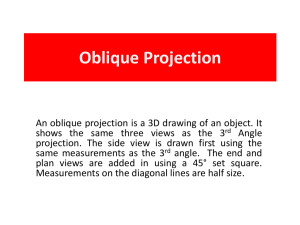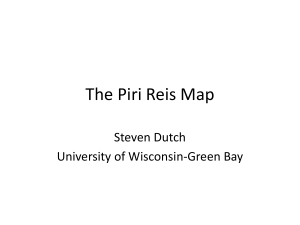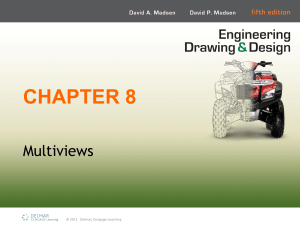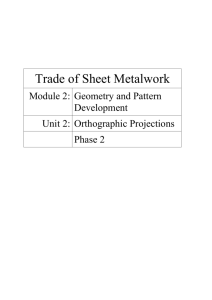AutoCAD 2D_I Module 5
advertisement
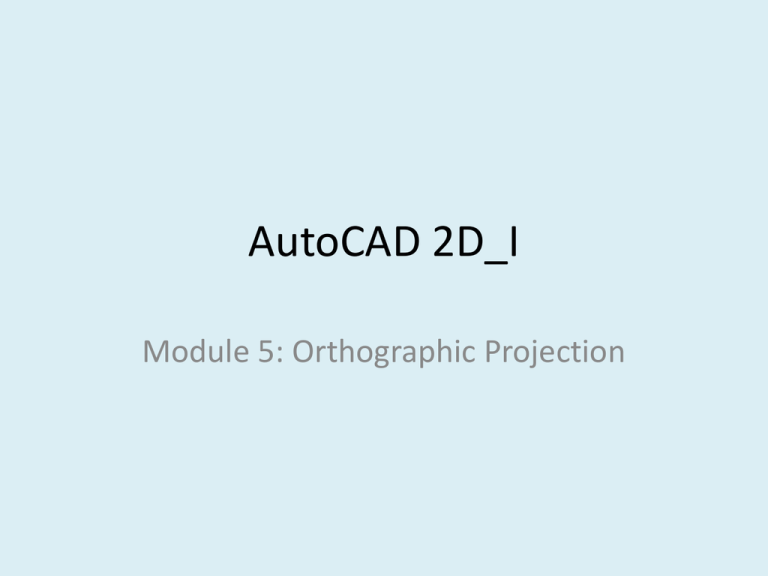
AutoCAD 2D_I Module 5: Orthographic Projection Module Objectives • identify surfaces in two-dimensional views from a given three-dimensional views. • Demonstrate an understanding of the glass box method. • Correctly sketch two-dimensional views from a given three-dimensional view. • Differentiate between first and third angle projection in standard terms. • Produce detailed drawings in either first or third angle projection from a given isometric or oblique drawing. Introduction Introduction An orthographic projection is a 2 dimensional representation of a 3 dimensional object. It is a system of drawing views of an object using perpendicular projectors from the object to a plane of projection as shown below. • Orthographic drawing" refers to a 2-D representation of an object in a view that shows only one side at a time. • Most orthographic drawings occur in multi-drawing sets in order to depict each side, top and bottom view. • Professions in design and construction use these types of drawings to inform the viewer of layout, size and shape. • House floor plans illustrate a common type of orthographic drawing Principle views • There are six principal views in a multiview orthographic projection. • These are the front, back, top, bottom, and left- and right-side views. Of these views or planes, three are referred to as primary planes of projection (vertical, horizontal, and profile). • Most objects are adequately represented by the three primary planes. Principle views Any object can be viewed from six perpendicular views as shown in the figure below Principle views It is clear that there are two main planes used in orthographic projection, one is the horizontal plan and the other is the vertical plan. These planes intersect and divide space into four quadrants. See the figure below The glass box method Glass Box Approach • Place the object in a glass box • Freeze the view from each direction (each of the six sides of the box) and unfold the box The glass box procedure The glass box procedure – The object is placed in a glass box. – The image of the object is projected on the sides of the box. – The box is unfolded as shown in Fig – The sides of the box are the principle views. First and Third Angle Projection First and Third Angle Projection As explained in the glass box method mentioned above, when the box is unfolded six views will eventually appear. There are 3 completely different views out of the 5 views and the other 3 are repeated from different angle of projection, this will take us to the two main forms of angle projection. First and Third Angle Projection The first-angle and third-angle projection. In the third-angle each view is placed at the same direction relative to the front view, while in firstangle the places are reversed Fig 5.6 shows the symbols of the first and third angle projection. An example of the first and third angle projections are shown in Fig. 5.7 and 5.8. First and Third Angle Projection The next figure shows the symbols of the first and third angle projection. First and Third Angle Projection An example of the first and third angle projections are shown in the following figures. First and Third Angle Projection Activities Activities Class Activity 1 Class Activity 2 Class Activity 3 Class Activity 4 Next Homework P Using the third angle projection, draw the following orthographic views of the isometric drawing shown below. 20 15 20 10 Front view. Side view. Top view. 30 10 15 40 30 40 65 S 10 60 F Back The End
